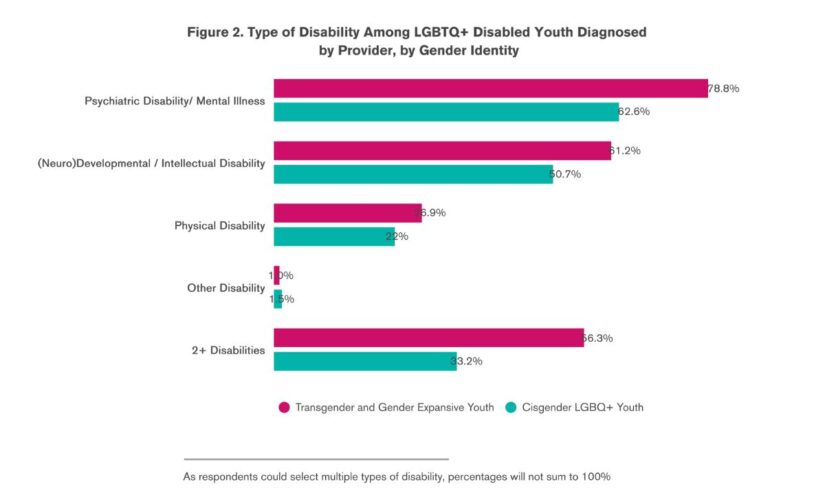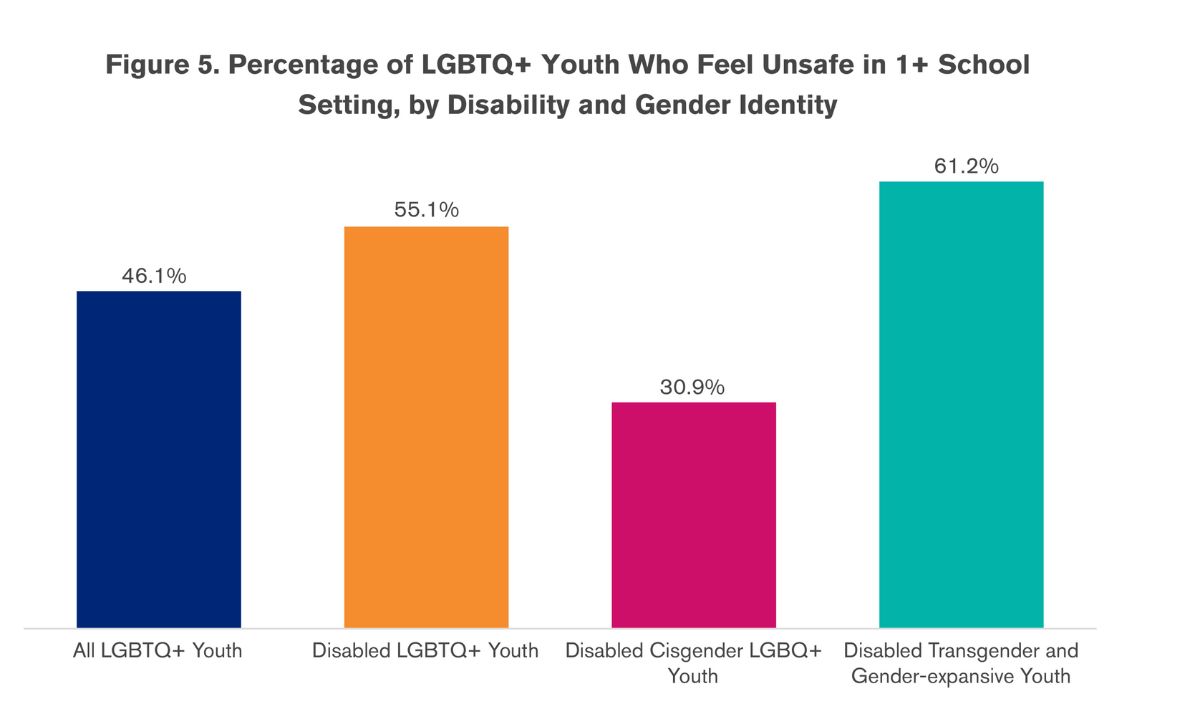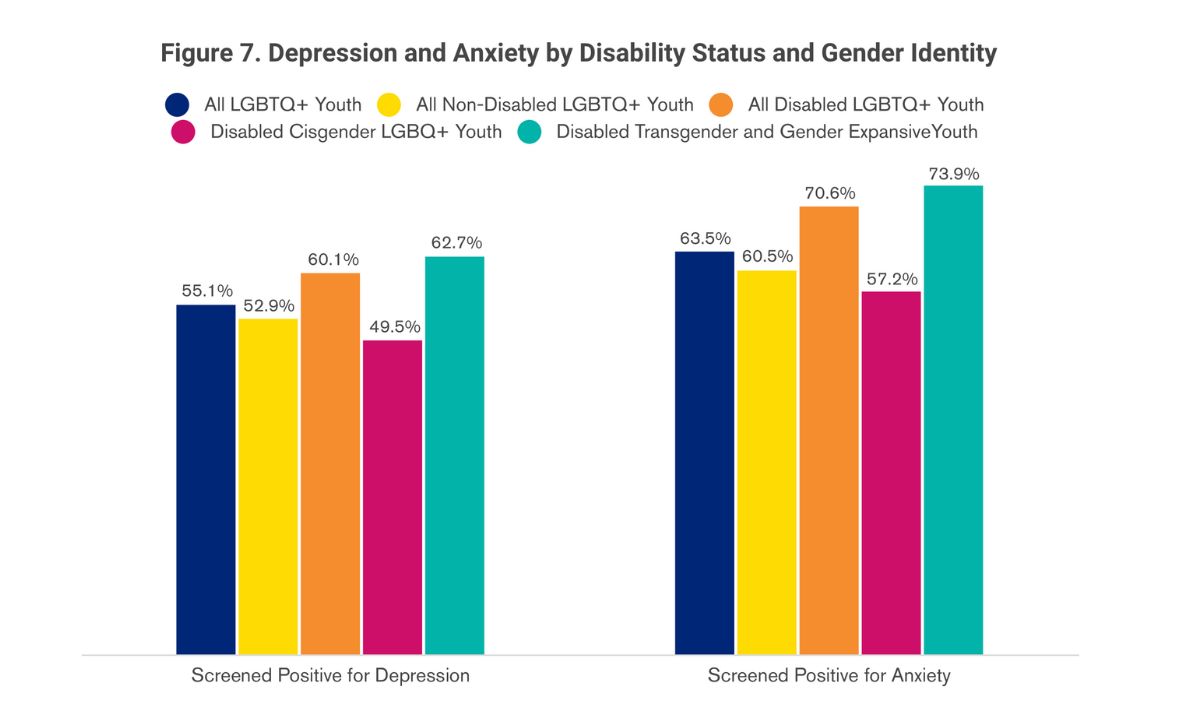Reflecting on the tenets that shape our educational practices is fundamental for …
Study Finds Higher Disability Rate Among LGBTQ Students Than General Population
Jennifer Livingstone

A recent release from the Human Rights Campaign presents findings that reveal a significant intersection between LGBTQ youth and formal disability diagnoses. The study indicates that 3 in 10 LGBTQ youth have been identified with at least one formal disability diagnosis, highlighting how this dual identity exposes them to heightened vulnerability within school environments.
Findings from researchers show that LGBTQ teens are twice as likely as the general student population to carry a medically documented disability. Of the disabled LGBTQ students surveyed, three-fourths have a mental health diagnosis, 60% have a neurodevelopmental disability, and a quarter have a physical disability, with more than half having multiple diagnoses.
It’s alarming that a significant percentage of disabled LGBTQ students reported experiencing physical or verbal harassment within a month prior to the survey. The report highlights that 62.5% faced harassment, with half being subjected to ridicule and 10% enduring physical altercations with fellow students.
The study also sheds light on the challenges faced by disabled LGBTQ students, particularly transgender or nonbinary individuals, in educational settings. These students encounter hurdles in accessing appropriate facilities, such as gender-inclusive restrooms and participation in sporting activities, leading to increased rates of bullying.
An essential aspect highlighted in the report is the scarcity of gender-inclusive facilities in schools, exacerbating obstacles for disabled trans and gender-expansive youth. The lack of suitable restrooms and locker rooms that cater to both their gender identity and physical needs further marginalizes these students.
A separate study by the U.S. Government Accountability Office indicates that a significant portion of school buildings lack physical accessibility for individuals with disabilities. This deficiency in infrastructure, including inaccessible restrooms, poses significant challenges for children with impaired mobility.
The report also outlines that a quarter of LGBTQ children with disabilities surveyed by the Human Rights Campaign have physical disabilities, emphasizing the diverse challenges faced by this group.
Despite facing numerous barriers, disabled LGBTQ youth seem to be more open about their gender identity or sexual orientation with adults compared to their non-disabled counterparts. The report suggests that these youth are more inclined to disclose their identity to school staff and family members.
Over the past four years, there has been a surge in right-wing lawmakers introducing bills aimed at limiting LGBTQ student protections. This surge in legislation has coincided with increased in-school victimization, especially in settings targeted by these laws, leading to growing concerns about student safety.
The tragic case of a nonbinary teen in Oklahoma who took their own life after being assaulted by fellow students underscores the real consequences of discriminatory laws. Advocates are calling for improved policies to address the rise in anti-LGBTQ hate crimes within schools.
Recent analyses have found a significant increase in anti-LGBTQ hate crimes in states where discriminatory laws have been passed, raising concerns about the safety of LGBTQ students. The implementation of these laws has been associated with escalating rates of in-school victimization.

The recent report by the Human Rights Campaign is based on data collected from a survey among LGBTQ youth aged 13 to 18. The study reveals that 30% of these youth have received formal disability diagnoses from healthcare providers, twice the rate among all students.
Although many families may lack resources for formal diagnoses, the actual number of LGBTQ youth with disabilities is likely higher. A significant number of LGBTQ youth self-identify as disabled, underscoring the need for improved access to diagnostic services for marginalized demographics.
Amidst these challenges, the Individualized Education Program process has emerged as a crucial mechanism for engaging caregivers and educators to address the specific needs of special education students. This collaborative approach may help explain why disabled LGBTQ students are more likely to disclose their LGBTQ+ identity to school staff.
Some studies have revealed significantly higher rates of autism diagnoses among transgender individuals. Understanding these intersections is essential for providing comprehensive support to LGBTQ youth with disabilities.
As anti-LGBTQ bills continue to be introduced, mental health challenges among LGBTQ youth are on the rise. Reports indicate escalating levels of anxiety, depression, and suicidal ideation among LGBTQ adolescents, emphasizing the need for inclusive policies and support systems.
It’s vital to acknowledge that discrimination and exclusion contribute significantly to mental health conditions among LGBTQ youth and children with disabilities. Efforts to address these disparities should focus on promoting inclusivity and combating harmful stereotypes.

The Human Rights Campaign report underscores the critical link between unsafe school environments and poor mental health outcomes among LGBTQ youth. The lack of safe spaces within schools, such as restrooms and locker rooms, significantly impacts the well-being of these students.
Statistics reveal that LGBTQ students participate less in athletics compared to their heterosexual peers, with disabled LGBTQ youth showing even lower rates of engagement. Access barriers, including bans on transgender and nonbinary students from participating in sports teams, further compound the challenges these students face.
Despite the progress in recognizing diverse gender identities, a significant number of U.S. teens still struggle with barriers to inclusion and participation. The need for inclusive policies and supportive environments for LGBTQ youth remains a pressing issue.
It’s essential to collect more data on LGBTQ youth across various demographic subgroups to better address the intersectional challenges they face in educational settings. Including sexual and gender minority status in data collection efforts can provide crucial insights for policymakers and advocates.


